German Werther’s Original Caramel’s Celebrate in Carmel,Indiana
(Gerry Furth-Sides) April 5th has been “officially” chosen as National Caramel Day around the world. So the folks at the very famous and popular Werther’s Original thought it would be fun to celebratethis year with a poll of caramel lovers nationwide how they pronounce their favorite treat: ker-uh-muhl or kar-muhl. The national survey results are in and ker-uh-muhl takes the sweet honors with 57 percent of Americans using the three-syllable pronunciation.
To add to the festivities, the caramel brand visited caramel lovers in Carmel, Indiana, to celebrate National Caramel Day. The city officially become “Caramel (ker-uh-muhl), “Indiana for the day in honor of the Werther’s Original National Caramel Day celebration.
“We wanted to celebrate National Caramel Day with the residents of what some might consider caramel’s namesake town. Of course, Carmel, Indiana was the perfect place,” said Meredith Suffron, director of marketing for Werther’s Original. “Regardless of how caramel fans pronounce it, we hope they celebrate with Werther’s Original today.”Candy lovers in the Carmel, Indiana area were invited to celebrate National Caramel Day in the city’s Arts & Design District with games and prizes along with lots of Werther’s Original, of course!
Candy-maker Gustav Nebel first introduced his chewy, rich caramel recipe in 1909 in the small European village of Werther, Germany. It was created for the Candy Shoppe founded in 1909 by August Storck. Using only the best ingredients made of real butter, fresh cream, white and brown sugars, a pinch of salt and a lot of time to create the unique Werther’s rich taste
Nebel was so pleased with the confection that he named the candy Werther’s Original in honor of his village. Crafting this smooth, creamy caramel became a family tradition handed down through generations and became internationally by its gold wrapper. Today, Werther’s Original comes in several varieties, from hard, chewy, soft and filled caramels, to sugar-free caramels and even caramel popcorn. And the internationally distributed Werther’s Original are still headquartered in Germany as well as in Chicago.
In the 1980s they became a worldwide brand under the English name of Werther’s® Original®. Today, Werther’s® Original® is made in the same tradition with an Old World recipe, using only the finest ingredients to craft premium classic caramels.

 (Gerry Furth-Sides) April 5th has been “officially” chosen as National Caramel Day around the world. So the folks at the very famous and popular Werther’s Original thought it would be fun to celebratethis year with a poll of caramel lovers nationwide how they pronounce their favorite treat: ker-uh-muhl or kar-muhl. The national survey results are in and ker-uh-muhl takes the sweet honors with 57 percent of Americans using the three-syllable pronunciation.
(Gerry Furth-Sides) April 5th has been “officially” chosen as National Caramel Day around the world. So the folks at the very famous and popular Werther’s Original thought it would be fun to celebratethis year with a poll of caramel lovers nationwide how they pronounce their favorite treat: ker-uh-muhl or kar-muhl. The national survey results are in and ker-uh-muhl takes the sweet honors with 57 percent of Americans using the three-syllable pronunciation.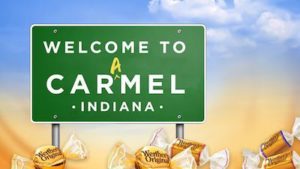
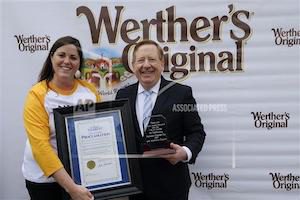 To add to the festivities, the caramel brand visited caramel lovers in Carmel, Indiana, to celebrate National Caramel Day. The city officially become “Caramel (ker-uh-muhl), “Indiana for the day in honor of the Werther’s Original National Caramel Day celebration.
To add to the festivities, the caramel brand visited caramel lovers in Carmel, Indiana, to celebrate National Caramel Day. The city officially become “Caramel (ker-uh-muhl), “Indiana for the day in honor of the Werther’s Original National Caramel Day celebration.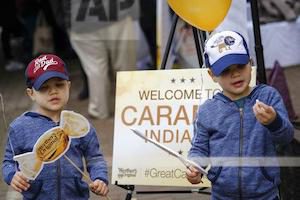
 Candy lovers in the Carmel, Indiana area were invited to celebrate National Caramel Day in the city’s Arts & Design District with games and prizes along with lots of Werther’s Original, of course!
Candy lovers in the Carmel, Indiana area were invited to celebrate National Caramel Day in the city’s Arts & Design District with games and prizes along with lots of Werther’s Original, of course!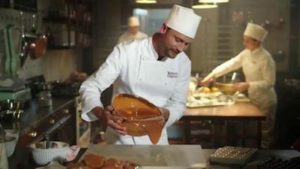 Candy-maker Gustav Nebel first introduced his chewy, rich caramel recipe in 1909 in the small European village of Werther, Germany. It was created for the Candy Shoppe founded in 1909 by August Storck. Using only the best ingredients made of real butter, fresh cream, white and brown sugars, a pinch of salt and a lot of time to create the unique Werther’s rich taste
Candy-maker Gustav Nebel first introduced his chewy, rich caramel recipe in 1909 in the small European village of Werther, Germany. It was created for the Candy Shoppe founded in 1909 by August Storck. Using only the best ingredients made of real butter, fresh cream, white and brown sugars, a pinch of salt and a lot of time to create the unique Werther’s rich taste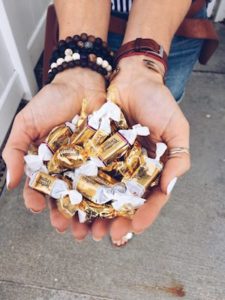
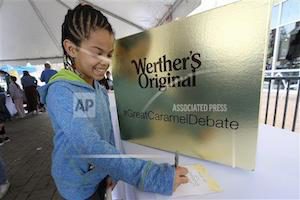
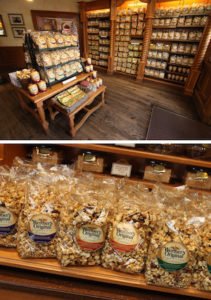

 Gerry Furth-Sides
Gerry Furth-Sides  Barbara Hansen
Barbara Hansen  Chef-owner Alain Cohen
Chef-owner Alain Cohen  Roberta Deen
Roberta Deen  Jose Martinez
Jose Martinez  Nivedita Basu
Nivedita Basu